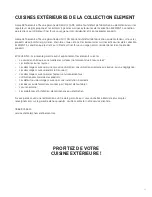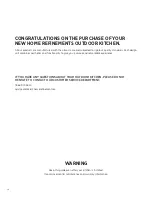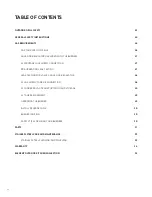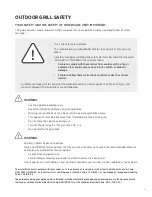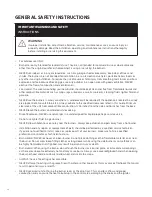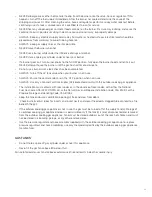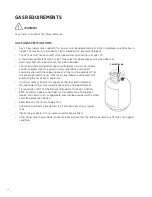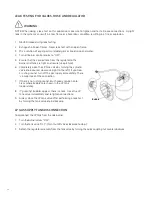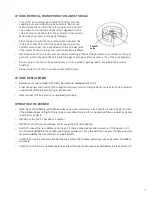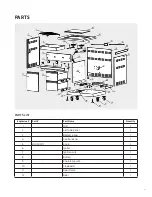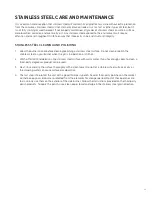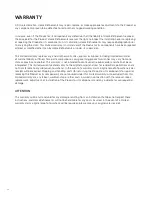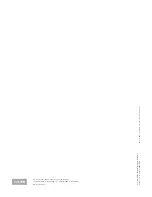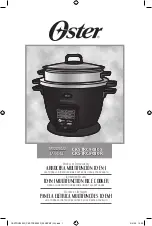
25
• NEVER allow grease or other hot material to drip from the burner onto the valve, hose, or regulator. If this
happens, turn off the fuel supply immediately. After the burner has cooled, determine the cause of the
dripping and correct it. After cleaning the valve, hose and regulator, perform a soapy water leak test before
continuing use. If a leak is discovered, call a qualified technician for service.
• NEVER heat any unopened glass or metal food container on the burner. Pressure may build up and cause the
container to burst, possibly resulting in death, serious personal injury, or property damage.
• ALWAYS: Keep any electrical supply cords away from water or heated surfaces. Electrical cords should be
placed away from walkways to avoid tripping hazards.
• ALWAYS: Keep gas supply lines as short as possible.
• NEVER move the burner when hot.
• NEVER use a burner while under the influence of drugs or alcohol.
• NEVER store a spare gas cylinder under or near your burner.
• If a burner goes out, turn burner knobs to the full OFF position, fully open the burner hood and let it air out.
NEVER attempt to use the burner until the gas has had time to dissipate.
• Do not use a burner until a leak check has been completed.
• ALWAYS: Turn off the LP tank valve when your burner is not in use.
• ALWAYS: Ensure the control knobs are in the ‘OFF’ position when not in use.
• ALWAYS: Use only a Ground Fault Interrupter (GFI) protected circuit with this outdoor cooking gas appliance.
• The installation must conform with local codes or, in the absence of local codes, with either the National
Fuel Gas Code, ANSI 2223.1/NFPA 54, or the Natural Gas and Propane Installation Code, CSA B149.1, or the
Propane Storage and Handling Code, CSA B149.2.
• Keep the tank enclosure’s ventilation opening(s) free and clear from debris.
• Check burner/venturi tubes for insects and insect nests and clean if needed. A clogged tube can lead to a fire
beneath the grill.
• If the outdoor cooking gas appliance is not in use, the gas must be turned off at the supply tank(s). Storage of
an outdoor cooking gas appliance indoors is permissible only if the tank(s) is (are) disconnected and removed
from the outdoor cooking gas appliance. Tanks must be stored outdoors out of the reach of children and must
not be stored in a building, garage, or any other enclosed area.
• Use the pressure regulator and hose assembly supplied with the outdoor cooking gas appliance. To replace
pressure regulators and hose assemblies, use only the models specified by the outdoor cooking gas appliance
manufacturer.
GAS TANKS:
• Do not store a spare LP gas cylinder under or near this appliance.
• Never fill the gas tank above 80 percent full.
Failure to follow clauses 1 and 2 above could cause a fire and results in death or severe injury.







